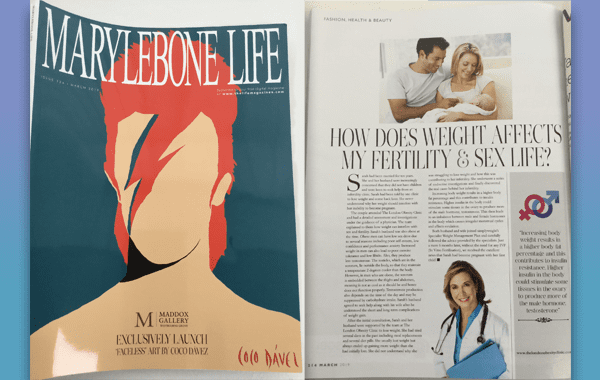Food is fuel for our daily lives. It plays a significant role in promoting and preserving health. The food we eat impacts our present and future health. Though people have become increasingly conscious about their quality of diet, not many of us pay attention to the utensils in which food is prepared. This could be because of lack of awareness or concern.
Our ancestors used unglazed cookware made of iron, brass or clay. Nowadays, we use a fusion of both conventional and contemporary vessels made of different materials such as non-stick, aluminium or ceramic.
According to Ayurvedic principles, special mention has been given regarding “vasana”. They say, the utensils have the ability to transform food and also impact the body in a positive and negative way.
Metal toxicity in humans
The human body constitutes many chemical elements which are needed for human life. Some elements commonly present are iron, iodine, zinc, copper, manganese, chromium, chloride etc.
Though some elements are beneficial for physiological processes, some elements called heavy elements can cause cellular toxicity. Iron, chromium and copper are some of the toxicity causing heavy metals. Out of these, iron and copper are used in making utensils and may lead to haemo-chromatosis and copper toxicity.
However, the physiological functions of certain elements like aluminium, cadmium, nickel, lead etc. have not been identified yet. But, they provide zero benefits when it enters the body through inhalation, ingestion or absorption via the skin barrier.
Metal toxicity can also be caused in the body through waste water, industrial effluents and vehicular emissions.
Factors influencing leaching of metals from utensils
Metal toxicity can be caused due to the following factors:
- pH of food cooked – Cooking food such as tomato juice which is acidic in nature may cause more metal to leach into food in comparison to cooking less acidic food or neutral foods like chicken or meat.
- Duration of contact – Longer the storage or cooking time of the food, higher is the amount of metal leaching into food.
- Age of utensil – The older the cookware, the higher is the amount of metal leaching into food.
Different types of cookware commonly used
According to the Food and Drug Administration (FDA), India, materials used to make utensils must not get leached to food. Some of the common materials used to make cookware are:
- Non stick
- Aluminium
- Stainless steel
- Copper
- Ceramic
- Iron
Common cooking temperatures for various methods of cooking
It is important to understand that cooking in certain vessels beyond the recommended temperature can lead to the release of toxic gases.
Here is a table which lists an estimate temperatures for commonly implemented cooking techniques:
| Temperature (°C) | Cooking technique |
| 177 | Baking |
| 260 | Highest temperature of ovens and grillsSearing meat |
| 371 | Preheated grills |
| 399 | Surface temperature of teflon pans when heated for 8 minutes on a conventional stove |
| 427 | Coil stove |
| 816 | Broiling temperature |
Utensils and their related diseases – Fact or myth?
1. Non-stick cookware
Non-stick is the coating provided to the surface of a vessel with PTFE (Polytetrafluoroethylene). The commercial name for “Teflon”. Non-stick cookware is convenient to use as they are easy to use and easy to clean with a lesser oil requirement for cooking.
Fact or myth?
When a non-stick is overheated to a temperature of 350 °C, the PTFE coating can start to dissociate and lead to the release of hydrofluoric acid and other toxic gases. There have been concerns which have been raised regarding its safety for health. PFOA or C8 (Perfluorooctanoic acid) is used in the process of making teflon. PTFE has been in use since the 1940’s to make non-stick cookware. It is due to this PTFE coating that food does not stick to the pan during cooking and is easy to wash off grease and scraps of food stuck to the pan.
Health concerns
- The International Agency for Research on Cancer (IARC) , which is a member of the World Health Organisation (WHO), has classified PFOA to be possibly carcinogenic to humans with an increase in risk of testicular and kidney cancer.
- Though there are insufficient studies conducted to confirm the speculations regarding the impact of non-stick on human health, several animal studies indicate that – Accidental oral consumption of PFOA through food leads to tumours of testicles, liver, pancreas.
- It was also observed that PFOA can lead to lymphoid organ atrophy and a reduction in de novo antibody production in mice.
- Significant number of studies reveal that PFOA can cross the placenta and get accumulated in the serum of the foetus. Higher incidence of Low birth weight (LBW) babies also occurs due to exposure to PFOA.
- The inhalation of toxic gases released when a non-stick pan is overheated can cause polymer fume fever. The onset of this could be 4-10 hours post exposure to polymer fumes. Typical symptoms are – Fever, chills, headaches, body aches etc. Recovery for the same can take anytime between 12-48 hours.
2. Aluminium
Aluminium vessels have a powdery silver finish. They are available easily in local shops in uncoated and anodised forms. They possess the advantage of being cheap, lightweight, convenient to cook in and provide an even heat distribution. Many mass production kitchens such as the army and hostels use aluminium for cooking. The main source of aluminium toxicity is coincidentally said to be locally sourced aluminium cookware.
Fact or myth?
Aluminium is a highly reactive metal. It can leach into food especially from pitted, worn out pots and pans.
Leafy greens, tomatoes and citrus food can absorb high amounts of aluminium. However, aluminium foil used can also be a cause of leaching, when it comes in direct contact with food.
The mean exposure from the cookware is said to be 125mg/serving. This is 6 times more than the PTWI (Provisional Tolerable Daily Intake) suggested by the WHO.
Health concerns
Aluminium can get deposited in the organs and acts as a neurotoxin leading to:
- Impairment of the visual motor coordination.
- Increased risk of Azheimer’s disease and Parkinson’s disease.
- Aluminium has been proven to be fatal for individuals suffering from kidney issues such as Chronic Kidney Disease (CKD), kidney failure, dialysis encephalopathy etc.
- Aluminium is primarily excreted by the kidneys. Though aluminium-containing agents were used to treat hyperphosphatemia, they are no longer in use due to the increased risk they cause to kidney function.
- Aluminium can hinder metabolism of iron, causing anaemia in individuals. It also impacts metabolism of other minerals like magnesium, calcium, phosphorus, fluoride etc. causing osteomalacia.
3. Stainless steel
Stainless steel is an alloy made of iron and carbon. The addition of chromium, molybdenum and nickel contribute to its scratch resistant properties.
Fact or myth?
Though the metals used in the alloy can get leached into the food, it is in minute quantities. This occurs only when there is damage to the surface of the utensil. This is quite rare due to its make.
Health concerns
If the stainless steel utensil is of good quality, there is no need to worry about any health concerns. It is very safe. The consumption of small amounts of chromium and iron are good for health. Nickel is not poisonous in small quantities. There is not much of a risk caused by cooking acidic food like tomatoes in stainless steel vessels.
4. Earthen cookware
Earthen pots and ladles have been in use for several generations in different civilisations. They are used widely by Indian villagers and tribals for cooking. It is said that cooking and storing food in mudware increases the taste and aroma of food.
Fact or myth?
Earthen cookware is said to improve the nutritive quality of food especially when food is fermented in it. Boiling water in earthen pots can decrease the toxic metal content of the water due to soil composition.
Health concerns
The inner glazing of earthen pots can lead to lead and cadmium toxicity.
5. Copper
Copper is a good conductor of heat. It provides an even heat distribution for cooking. Though it is a trace element, It is essential for health. Cooking and storing food or water in copper ware is good for health if they have low serum copper levels.
Fact or myth?
Cooking in copper cookware can cause high leaching when acidic food is prepared in them. Copper is highly prone to corrosion and rust which can be ingested through food by mistake.
Health concerns
Copper is a micronutrient which is needed by the body in small quantities. Small quantities are good for the body; a large amount in a single dose can cause toxicity.
Copper toxicity can be manifested as:
- Cancer in tissues due to angiogenesis
- Wilson’s disease
- Copper toxicosis
- Indian childhood cirrhosis
- Diabetes
- Alzheimer’s disease
6. Iron
Iron cookware is a popular utensil used for cooking meat and fried food. A type of iron cookware called cast iron cookware is more popular than iron cookware due to its heaviness. Cast iron cookware is used widely in India, Korea, Japan etc. It has a good heating capacity and seasoning cast iron cookware can make it a suitable alternative to non-stick cookware.
Fact or myth?
Cooking in cast iron is a convenient method of dietary iron fortification. Cooking in iron ware can provide at least 20% of daily Iron requirement within safe limits. The iron absorption will depend on acidity of food, water content, cooking time and age of cookware. The older the cast iron utensil, the better it is for health.
Health concerns
Individuals with haemo-chromatosis (iron overload) and bronze disease must avoid the use of cast iron cookware.
Possible solutions to issues related to utensils and diseases
Though there are several different materials used for making cooking easy, it is important to follow a few safety measures to safeguard our health.
- Do not use teflon pans for frying.
- Avoid high heat cooking.
- Do not expose your utensils to a sudden sore in cooking temperature.
- Use gentle scrubs instead of metal wired scrubbers for dish washing.
- Always prefer hand washing rather than dishwashing your utensils.
- Invest in high quality utensils.
- Maintain your utensils well. Make sure to season your cast ironware regularly.
- Replace nonstick cookware with cast iron cookware, stainless steel, pyrex or ceramic cookware etc.
- Replace old cookware with new utensils.
Always remember “prevention is better than cure”. It is never too late to start over and invest in our health, because “a healthy life is a happy life”.
Mayuri,
Dietetic Researcher, Simplyweight













